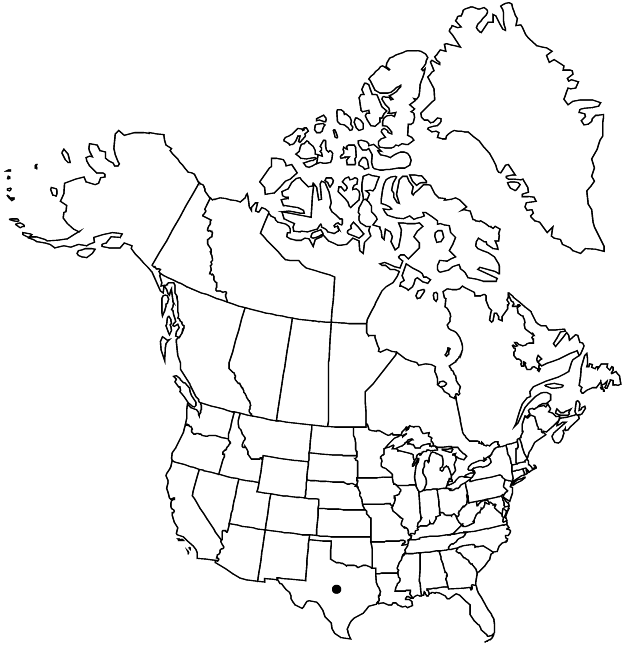Difference between revisions of "Eriogonum nealleyi"
Contr. U.S. Natl. Herb. 1: 48. 1890.
FNA>Volume Importer |
FNA>Volume Importer |
(No difference)
| |
Revision as of 22:37, 16 December 2019
Herbs, polycarpic, 5–12 dm, glabrous; taproot not chambered. Stems: caudex compact; aerial flowering stems usually 1, not fistulose, 2–4.5(–5) dm, glabrous. Leaves basal and cauline; basal petiolate, petiole 1–2.5 cm, strigose, blade oblanceolate to spatulate, 4–8 × 0.5–1.6 cm, strigose and grayish on both surfaces; cauline blade absent or sessile, oblanceolate, (0.5–)1–4 × (0.2–)0.3–0.8 cm, similar to basal blade. Inflorescences 2–7 dm; branches glabrous; bracts scalelike, 0.7–2.5 × 0.5–2 mm. Peduncles erect, straight or slightly curving upward, 1–8 cm, glabrous. Involucres turbinate-campanulate to campanulate, 2–3 × 2–4 mm, glabrous; teeth 0.5–1 mm. Flowers 1.5–2 mm at anthesis, 2.5–3 mm in fruit; perianth white to greenish white at anthesis, reddish in fruit, glabrous or sparsely strigose abaxially; tepals narrowly elliptic to oblong; stamens 2–3 mm; filaments pilose proximally. Achenes greenish brown to reddish brown, 4–6 mm, 3-winged along distal 1/3, nearly beakless, strigose. 2n = 40.
Phenology: Flowering Jun–Sep.
Habitat: Calcareous flats and slopes, mixed grassland, saltbush, and creosote bush communities, oak woodlands
Elevation: 500-800 m
Discussion
Of conservation concern.
Historically, Eriogonum nealleyi occurred in Coke, Howard, Irion, and Sterling counties of southwestern Texas. Recent collections are from Irion and Sterling counties.
Selected References
None.
